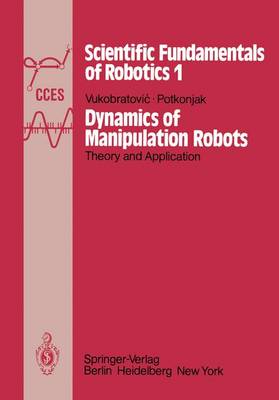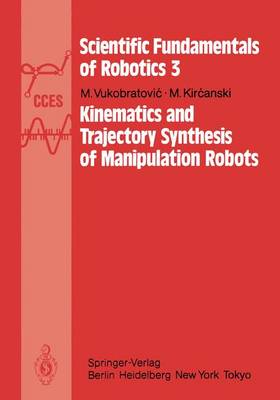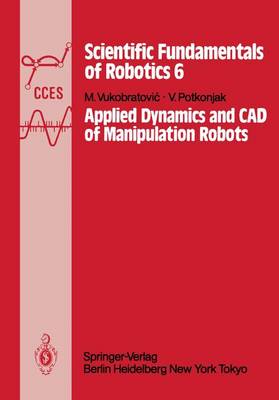Scientific Fundamentals of Robotics
3 primary works
Book 1
This monograph represents the first book of the series entitled "SCI- ENTIFIC FUNDAMENTALS OF ROBOTICS". The aim of this monograph is to ap- proach the dynamics of active mechanisms from the standpoint of its application to the synthesis of complex motion and computer-aided de- sign of manipulation mechanisms with some optimal performances. The rapid development of a new class of mechanisms, which may be referred to as active mechanisms, contributed to their application in various environments (from underwater to cosmic) . Because of some specific fea- tures, these mechanisms require very careful description, both in a mechanical sense (kinematic and dynamic) and in the synthesis of algo- rithms for precise tracking of the above motion under insufficiently defined operating conditions. Having also in mind the need for a very fast (even real-time) calculation of system dynamics and for eliminating, in principle, the errors made when forming mathematical models "by hand" this monograph will primarily present methods for automatic for- mUlation of dynamic equations of motion of active spatial mechanisms.
Apart from these computer-oriented methods, mention will be made of all those methods which have preceded the computer-oriented procedures, predominantly developed for different problems of rigid body dynamics. If we wish to systematically establish the origins of the scientific discipline, which could be called robot dynamics, we must recall some groups and individuals, who, by solving actual problems in the synthe- sis and control of artificial motion, have contributed to a gradual formation of this discipline.
Apart from these computer-oriented methods, mention will be made of all those methods which have preceded the computer-oriented procedures, predominantly developed for different problems of rigid body dynamics. If we wish to systematically establish the origins of the scientific discipline, which could be called robot dynamics, we must recall some groups and individuals, who, by solving actual problems in the synthe- sis and control of artificial motion, have contributed to a gradual formation of this discipline.
Book 3
Kinematics and Trajectories Synthesis of Manipulation Robots
by M. Vukobratovic and M. Kircanski
Published 2 December 1985
A few words about the series "Scientific Fundamentals of Robotics" should be said on the occasion of publication of the present monograph. This six-volume series has been conceived so as to allow the readers to master a contemporary approach to the construction and synthesis of con- trol for manipulation ~obots. The authors' idea was to show how to use correct mathematical models of the dynamics of active spatial mecha- nisms for dynamic analysis of robotic systems, optimal design of their mechanical parts based on the accepted criteria and imposed constraints, optimal choice of actuators, synthesis of dynamic control algorithms and their microcomputer implementation. In authors' oppinion this idea has been relatively successfully realized within the six-volume mono- graphic series. Let us remind the readers of the books of this series. Volumes 1 and 2 are devoted to the dynamics and control algorithms of manipulation ro- bots, respectively. They form the first part of the series which has a certain topic-related autonomy in the domain of the construction and application of the mathematical models of robotic mechanisms' dynamics.
Book 6
Applied Dynamics and CAD of Manipulation Robots
by M. Vukobratovic and V. Potkonjak
Published 2 June 1985
This book is a logical continuation of Volume 1 of the series entitled "Scientific Fundamentals of Robotics" which presents all of the basic methods for computerized construction of dynamics of manipulation ro bots as well as the essential concepts of computer-aided design of their mechanics. Vol. 1 of the Series also contains the main practical re sults from the elastodynamics of manipulation robots, having in mind a need for forming a computer procedure which allows efficient checks of elastic deformations of a manipulator tip or some other of its charac teristic points. Wishing to add a highly applications-oriented dimension to the dynamic aspect of studies of manipulation robots, the authors have made a kind of a topic-based selection by leaving unconsidered some aspects of studies of robots, such as elasticity, and discussing others, more im portant in their opinion, to such an extent as suffices to make them practically applicable. The authors have decided not to treat in detail the problem of flexible manipulation robots for two reasons. The first results from the atti tude that the permissible (desired) robot elasticity may, satisfacto rily well, be tested using the method described in Vol. 1 of the Series.


